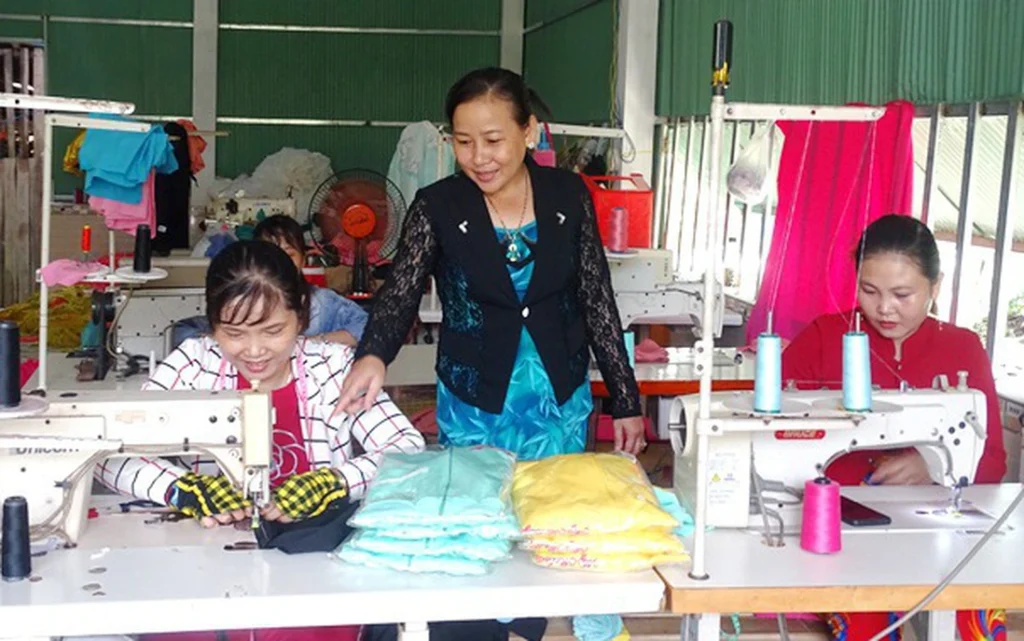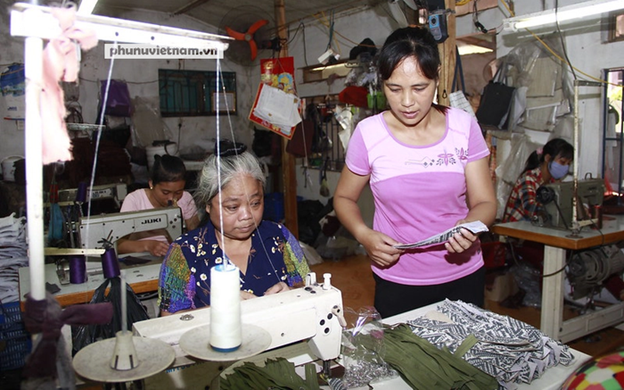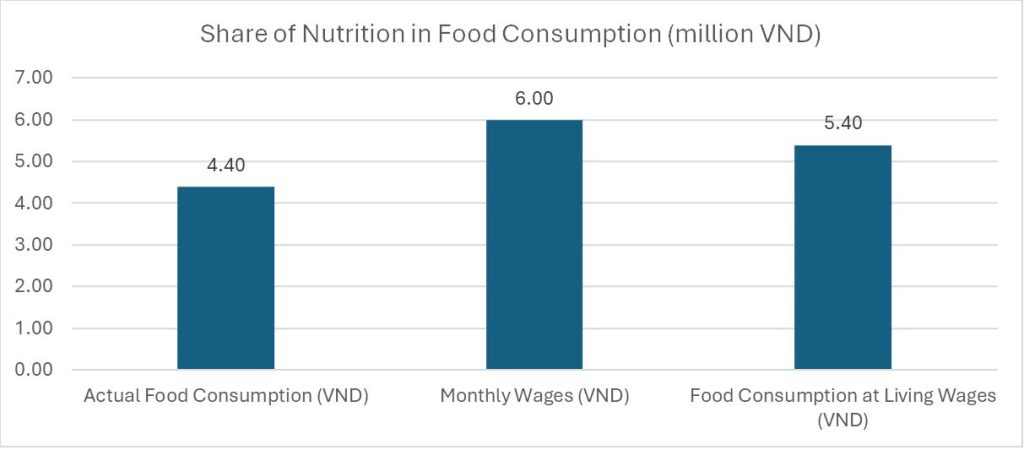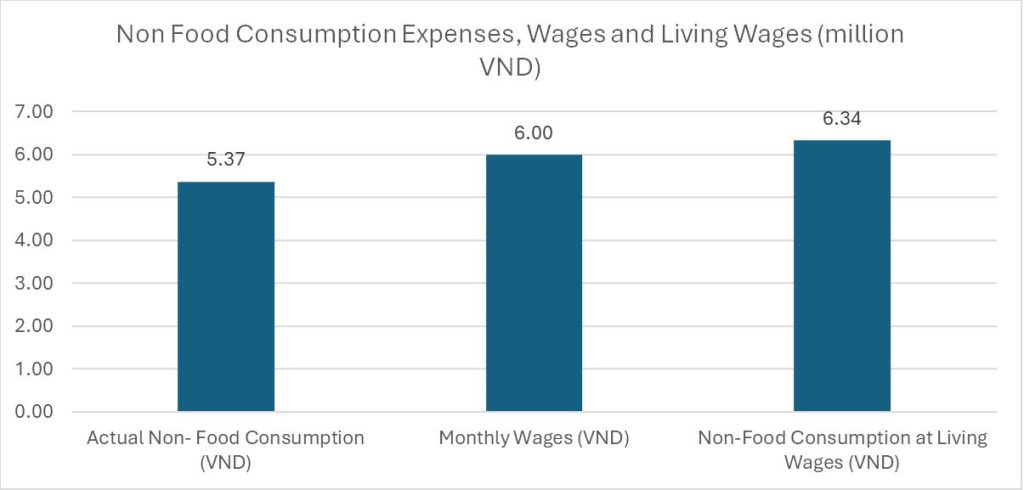Female Garment Workers Spend Just Over 40,000 VND per day on Food
Author: H.Hòa
This article has been translated from its original source in Phunu Vietnam: Mức chi tiêu bình quân cho dinh dưỡng của nữ công nhân may chỉ hơn 40 nghìn đồng/ngày

According to a report from the 2023–2024 household consumption survey conducted by Asia Floor Wage Alliance (AFWA) on garment industry workers in Vietnam—90% of whom are women—their low wages result in an average daily nutrition expenditure of only 40,761 VND.
AFWA recently released findings from this survey, which examined the financial and consumption patterns of garment industry workers in Vietnam. With a workforce exceeding 2.5 million people, the garment industry is one of the largest in the country. Of these workers, 90% are women. The survey also revealed that more than 55% of respondents were under 35 years old, while only 13% were over 45.
The report highlights that the garment workers’ wages remain low. Around 33%
of surveyed workers reported earning less than 4 million VND per month, while
the average monthly income stood at 6 million VND. This figure typically includes
overtime pay and production bonuses, indicating that base salaries are even
lower than 6 million VND.
One of the primary reasons for these low wages is Vietnam’s current national minimum wage, which remains inadequate. For instance, the minimum wage in Region 1 is set at 4,960,000 VND, contributing to the overall low base salaries in the industry. Available data suggests that workers receive an estimated 3 million VND per month in allowances, including overtime, travel, and meal stipends.
As a result, many workers’ base salaries barely meet or even fall below the regional minimum wage. These low wages directly impact their spending on essential needs, particularly nutrition.

The report clearly states that the average daily nutritional intake of garment workers is 2,039 Kcal, with an expenditure of 40,761 VND per day.
Nutrition is primarily sourced from meat (33%), grains (28%), vegetables and fruits (15%), and food products/snacks (7%). However, most of the protein from meat comes from chicken, fish, and eggs, while rice remains the main source of carbohydrates.
Food expenses account for 74% of workers’ salaries. Notably, the actual cost of food consumption is very close to the estimated cost required for a living wage. This is largely due to the average family size of surveyed workers, which is five members per household, while living wage estimates are based on three consumption units.


A worker’s salary is not even enough to meet the family’s basic non-food needs,
such as: medical expenses, education, transportation, entertainment, rent/
housing expenses, and daily consumer goods expenses. Non-food costs exceed
the average salary of 6 million VND/month.
